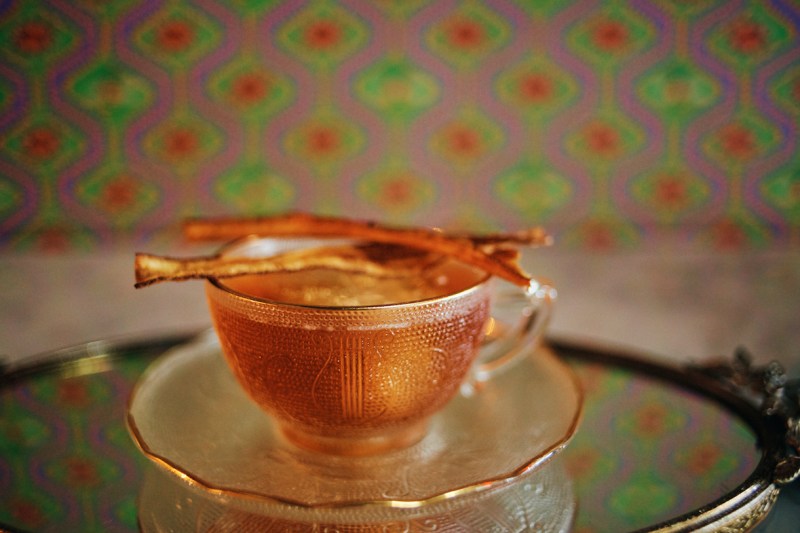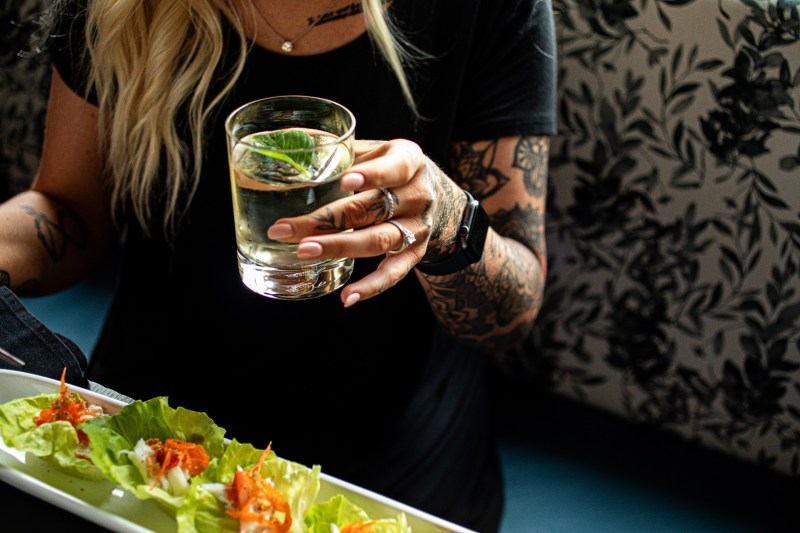While it was once best known for its homegrown spirits like sake or shōchū, today, Japan enjoys a worldwide reputation for its whisky as well. While Japan doesn’t have the long history of whisky making that a place like Scotland does, it has quickly become known for its exceptional quality and smoothness, and whisky drinkers the world over watch out for exciting new releases. And although you would drink much of Japanese whisky neat, it can also be used with care in delicious Japanese whisky cocktails.
To learn about such an in-depth topic, an expert is needed. Enter Shigefumi (Shige) Kabashima, the owner and bar director of NR and ROKC (Esquire’s “Best Bars in America 2017” and Thrillist’s “Best Cocktail Bars in America 2018”) in New York. Born and raised in Kyushu, Japan, Kabashima has over 20 years of bartending and management experience. He has also taught Japanese bartender-style seminars and has been a consultant for hotels, restaurants, and bars in the U.S. and abroad. His venture, NR, is a unique Japanese cocktail and ramen spot in Manhattan’s Upper East Side. The design of the distinctive establishment was inspired by the port cities during Japan’s Meiji Period (1868-1912). The cocktail program here is extensive, featuring classic and innovative cocktails, and many of them featuring Japanese whisky.
Boulevardier cocktail recipe

(By Shige Kabashima of NR and ROKC in New York City.)
This Japanese cocktail uses Nikka Coffey grain. First released in 2012 by Nikka, this corn whisky is distilled in a Coffey still (column still) and aged in American oak casks (remade and re-charred), imparting a sweet and mellow flavor. The central philosophy to Kabashima’s cocktail creation is a combination of balance and culture. Because Kabashima has experience in Japan and America, he understands how to create cocktails that fit both markets.
“Many Japanese people like highballs and other items with relatively low alcohol content,” said Kabashima. “But I think that many people in New York prefer high alcohol content instead. At NR, we offer both.”
Note: Burdock is a long, slender root vegetable popular in Japan. When cooked, burdock root is crunchy with a soft, earthy flavor. Burdock chips can be purchased at your local Japanese or Korean market.
Ingredients:
- 1 1/2 ounces Nikka Coffey grain
- 2/3 ounce burdock-infused amaro
- 2/3 ounce Dolin blanc
- 1 dash of house angostura bitters (cinnamon, star anise, clove infused Angostura bitters)
Method:
- Mix and stir all the ingredients together.
- Pour into a glass.
- Garnish with burdock chips.
White Tiger cocktail recipe

(Created by Ed Parowski, Mizu, Charlotte)
Japanese whisky can also be used for fusion recipes, such as the White Tiger from Mizu, which brings together flavors of Japan, Thailand, and Italy. With its use of thai basil infused into aperitif, it adds a freshness and green lightness, while the use of Italicus liqueur adds a citrusy sweetness that brings out the sweeter notes in the whisky. It’s all topped off with some bitters to add complexity and interest to this unusual recipe.
Ingredients:
- 1 3/4 ounces Suntory Toki Japanese Whiskey
- 1 ounce Thai-Basil Infused Cocchi Americano
- 3/4 ounce Italicus Bergamot Liqueur
- 2 dashes Watkins Aromatic Bitters
Method:
- Add the ingredients to a mixing glass with plenty of ice.
- Stir well to combine and dilute.
- Strain into a rocks glass with a fresh ice cube.
What makes Japanese whisky unique?

Japanese whisky-making is heavily inspired by Scotland (hence the spelling of whisky without the “e” after Scotch whisky). One man is responsible for starting the whisky tradition in Japan — Masataka Taketsuru, a Japanese chemist who arrived in Scotland in 1918. Originally in Scotland to study chemistry, Taketsuru soon became enamored with whisky and eventually brought the tradition back to Japan. Things moved fast and by the 1920s, whisky was already being produced at the commercial level in Japan, centered on the first Japanese whisky distillery in Kyoto.
Similar to Scotch, Japanese whisky also uses a large amount of malted barley. This barley is then mashed, twice distilled, and wood-aged in American oak or Sherry casks. Japanese whisky makers will also use native Mizunara oak, giving the whisky a citrusy and spicy fragrance. Most whisky distilleries in Japan are owned by two companies — Nikka and Suntory. But there is an interesting fact about Japan’s whisky industry that makes it unique from other countries. Despite Japan being influenced by Scottish whisky, there is a major divergence in terms of sharing. Unlike Scotland, there is no sharing between Japanese distilleries, forcing each Japanese distillery to self-innovate. This makes it difficult to classify Japanese whisky by any singular style, resulting in a diverse range of flavors ranging from fruity or herbaceous to citrusy or vanilla.
This diversity can be a challenge even for experts. “Since there is such a huge variety these days, I think it is difficult to tell the difference in taste by category. Personally, I like to drink Yamazaki 12-year Japanese whisky and Buffalo Trace bourbon,” said Kabashima.
The art of the Japanese whisky cocktail
While phenomenal by itself or over ice, Japanese whisky is also great in cocktails. In Japan, whisky highballs (whisky with soda water with the occasional citrus peel) are ubiquitous. Because of its large array of taste profiles, balancing the flavors of ingredients is important when crafting a Japanese whisky cocktail.
“I think that whisky has a unique sweetness and barrel flavor,” said Kabashima. “So I try to add sweetness, sourness, and bitterness to make each flavor stand out more. Be extra cognizant of the types of flavors that should be combined with the sweetness of the barrel notes in Japanese whisky and bourbon, and then try to find ingredients that are close to that taste to make it. Experiment!”
While some amateur cocktail and whisky drinkers might be intimidated by the process of creating their own Japanese whisky cocktail, it’s helpful to remember that sometimes simple is best. For Kabashima, some of his favorite flavor additions to Japanese whisky is yuzu (a Japanese citrus with notes of lime and tangerine) and




